|
How did you first become interested in Monarch butterflies?
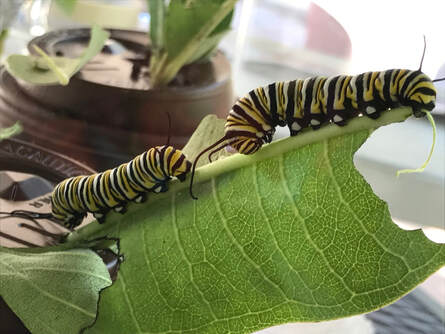 Monarch butterfly caterpillars on milkweed leaves; Photo: Carolyn Smith Monarch butterfly caterpillars on milkweed leaves; Photo: Carolyn Smith What is the importance of Monarch butterflies? Why do we monitor the different phases of their lives (egg, caterpillar and butterfly)? Is this a local, statewide, national, or international effort? Carolyn explained that Monarchs, like polar bears, are an iconic species whose future is not assured. “Monarchs undertake an amazing migration each year, whose secrets scientists are still trying to unlock. But their numbers have declined so much that the migration is at risk,” she said. “A number of groups across North America came together to create the Monarch Joint Venture, a partnership of nonprofits, state agencies and academic programs trying to conserve the monarch migration. One of the partners is the Monarch Larva Monitoring Project (MLMP) at the University of Wisconsin. Since 1997 its scientists have enlisted the help of citizen scientists to collect information on Monarch distribution and milkweed habitat. Carolyn has established her farm as a registered site where she and other volunteers collect data on Monarchs, which is then reported to MLMP. “Citizen scientists like our monitoring group are studying all stages of Monarchs from egg to butterfly in order to provide data to researchers,” she explained. “These data have informed scientists on what threatens Monarchs and what role people can play to help them survive.” Carolyn noted that data have led scientists to confirm that the early stages are when the greatest mortality occurs. What is involved in monitoring Monarchs? Does it take special skills or training? Carolyn explained that Monarch monitoring requires volunteers to learn what the different instars (larval stages of caterpillars) look like, and where to look on a plant for eggs and caterpillars. “It’s not difficult,” she said, “but it definitely takes some practice for most folks to learn to correctly identify what instar they are seeing.” She related how excited her monitoring group gets when they find the first egg, the first caterpillar, or see adult Monarchs flying around the milkweed patch. “There is such excitement and joy when you find one of these delicate creatures and know that you are helping to assure that Monarchs will continue to be enjoyed by people everywhere,” she explained. 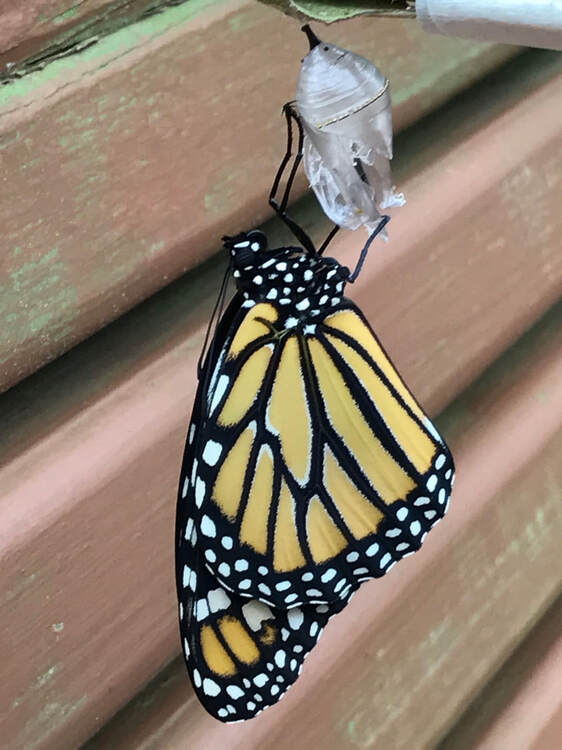 Monarch butterfly; Photo: Carolyn Smith Monarch butterfly; Photo: Carolyn Smith Are Monarch populations increasing, decreasing or staying the same? “The data show differences in Monarch population totals from year to year, sometimes up and sometimes down. But the overall trend is clearly a marked decline,” Carolyn noted. She said that between last year’s and this year’s numbers, there was a 22% drop in the number of Monarchs that overwintered in Mexico, where most eastern Monarchs go to spend the winter. What are the threats to Monarch survival? Carolyn said that Monarchs have a lot of predators, including birds, spiders and grasshoppers. “But the loss of habitat is one of the biggest threats to Monarch populations,” she noted. That has been exacerbated by the broad application of insecticides that many farmers use. “Over the last 20 years, ‘Roundup-ready’ crops are being planted and entire fields are being sprayed, as opposed to selective spraying that had been the practice before,” Carolyn explained. There has also been a loss of overwintering habitat in Mexico. What can ORMN members and others do to help support Monarch butterflies? “Plant milkweed and nectar plants,” she said. She noted that even people who live in cities and towns can help Monarchs by planting the food they need and the milkweed they require to lay their eggs. Carolyn encourages everyone to talk to people about Monarchs. “Just sharing your own admiration of these beautiful creatures may change someone’s behavior.” She shared a conversation she had at her local gym with another member, who then became inspired to plant milkwood and native wildflowers on her property. “Every effort is important,” Carolyn emphasized. “If each one of us told five people about Monarchs, and those five people told five people – you get the picture!” Interviewed by Charlene Uhl March 2023
0 Comments
In February 2022, Keith received the Best Effort Award for Land Ethics and Conservation from the Bowmans Hill Wildflower Preserve. This recognized the creation of the Potomac Valley Native Plant Collection at Meadowlark. Recently, Keith spent four months with the American Horticultural Society helping them with a needs assessment for various new projects. He left to assist with a new grandchild – but is continuing to consult with them on education and travel programs. During the forty years he worked as an interpretive naturalist and natural resource manager, he has studied wilderness areas and botanical gardens in Asia, the Pacific, Africa, Australia, the Americas and Europe. When and why did you become interested in nature and the natural world? Keith cannot remember when he wasn’t interested in nature. While his father was not an outdoor person, his mother was always outdoors – taking him on walks through the local parks and enjoying being outside whenever the weather permitted. He has always been fascinated by birds but said he’s not a “lister – I just enjoy them in the environment in which I see them.” While enjoying outdoor sports such as rock climbing, mountaineering or traveling the globe, Keith was fascinated with the natural world and the native ecosystems. He is particularly interested in regional flora. He has been to more than 100 botanical gardens in nearly 40 countries around the world where he always makes a point of visiting native plant collections. What is the most amazing thing you have experienced in nature? In his travels around the world, Keith has seen many amazing things in nature, including lava flowing into the sea on the big island of Hawaii. “It was stunning to essentially see earth being created,” he said. But one experience in nature stands out more than any other. During his gap decade between high school and college, Keith worked for the Montgomery County School System, taking students on white water rafting, camping and climbing trips. One of those trips stands out vividly in his memory. “It was early May and we were hiking Old Rag to camp on the summit, which was allowed back then,” he explained. The following day they climbed up Mount Robertson and then dropped into Weakley Hollow where they were met by the most phenomenal site. It was covered in wildflowers. “I was blown away. I had never seen such a diversity of flowers in my life,” Keith stated. That experience was an epiphany for Keith, who decided to go to college and study plants.
But he cautions that we need to be realistic. The nursery stock is still 99% ornamental plants. “We can’t set the world back 500 years before Europeans started altering the landscape on a vast scale,” Keith explained. “You can have native and nonnative plants which are not aggressive that remain ecologically stable.” He also noted that climate change is having an immense impact on our existing native plants. “Red maples are becoming prolific and grapevines more aggressive.” Actions that we can take include legislation like that adopted by Oregon which prohibits the sale of English ivy.
Tell us about your work as a Seasonal Naturalist, Potomac Overlook Regional Park and Smithsonian Associates Study Tour Leader “As native plant specialist, I really enjoy introducing new plants to park visitors,” Keith stated. “I always stress that all native plants in cultivation support our regional biodiversity,” he emphasized. “Native plants are patronized by many insects, birds, mammals, and even reptiles.” He tells park visitors that when they use native plants in their yard, they’re supporting the local ecosystem – and in turn, entire eco-regions. “Our area is truly diverse and a great place to grow natives,” he explains that folks will be amazed at the diversity of life that appears as their “native-scape” garden matures over time. As a local study leader for Smithsonian Associates, he has led guided tours for over 20 years. These have included tours to the Chesapeake Bay, West Virginia Highlands, Shenandoah and Great Falls National Parks. Keith maintains a blog – keithtomlinson.blogspot.com – that includes articles on botanical gardens he has visited as well as information on environmental education and nature resource management with a focus on plant diversity conservation. He is careful to explain that he is an interpretive naturalist – not a scientist. “I try to make nature ‘accessible’ to the general public by sharing experiences with them in natural areas.” Interviewed by Charlene Uhl, May 2022
Describe what you do on your property to support a healthy ecosystem. Tree and her family live on 3 acres in Montgomery County that were previously logged, then used as a cow pasture. They leave the remaining wooded area alone and typically mow the grass a minimum number of times during the summer. “We mostly mow to keep the tick population away from the house”, she explained. They try to minimize their use of chemicals. “I try to manage insect pests in my vegetable garden by hand-picking caterpillars and squash bugs, or timing my plantings to avoid the worst of the insect damage.” She rarely cleans up her flower garden until late spring, “when most of the overwintering invertebrates have woken up.” A pile of cut wood is home for bugs, birds, snakes and the occasional rabbit. Her family has composted for years but recently got four pet Nigerian dwarf goats. “They have been getting much of my vegetable scraps as treats,” she said with a chuckle. The goats do their part by eating multiflora rose, autumn olive, and oriental bittersweet. “All of their soiled bedding now goes into the garden to enrich the soil.” Her family also has solar panels in the back yard. Tree truly enjoys sharing experiences in nature with her 14-year old daughter. “We recently saw a pair of black snakes mating, which offered a wonderful chance to discuss what an ecosystem is and the importance of procreation by animals that are integral to the balance of nature.” What is the most amazing thing you have experienced in nature? Tree had a marvelous list of amazing things she has seen in nature. Here are just a few:
What is something you would like to share with ORMN members?
Tree shared something that is rooted in the concept of biophilia: “One thing I have learned over the years is that not everyone has the same need or desire to experience or learn about nature as deeply as others do.” She has recognized that some folks are perfectly content to watch birds at a feeder or take a walk in a park. “My grandmother adored butterflies and flowering plants – but she only knew their common names,” Tree noted. She continued, “Some people simply appreciate the beauty of the natural world without understanding the workings of the ecosystem before them, and that’s perfectly fine.” She believes the more people who enjoy nature on any level, the greater the support there will be for protecting our natural resources. With respect to the spotted lanternfly, “The more you know about this insect, the less fearful you will be,” Tree stated. “This isn’t like a Japanese horror film (remember Mothra?). These insects are actually fairly fragile. They do not bite, they don’t invade your home like stink bugs, they are not a major threat to landscape plants and, they are easy to recognize and control.” Interviewed by Charlene Uhl, March 2022 |
AuthorWrite something about yourself. No need to be fancy, just an overview. Archives
December 2023
Categories
All
|
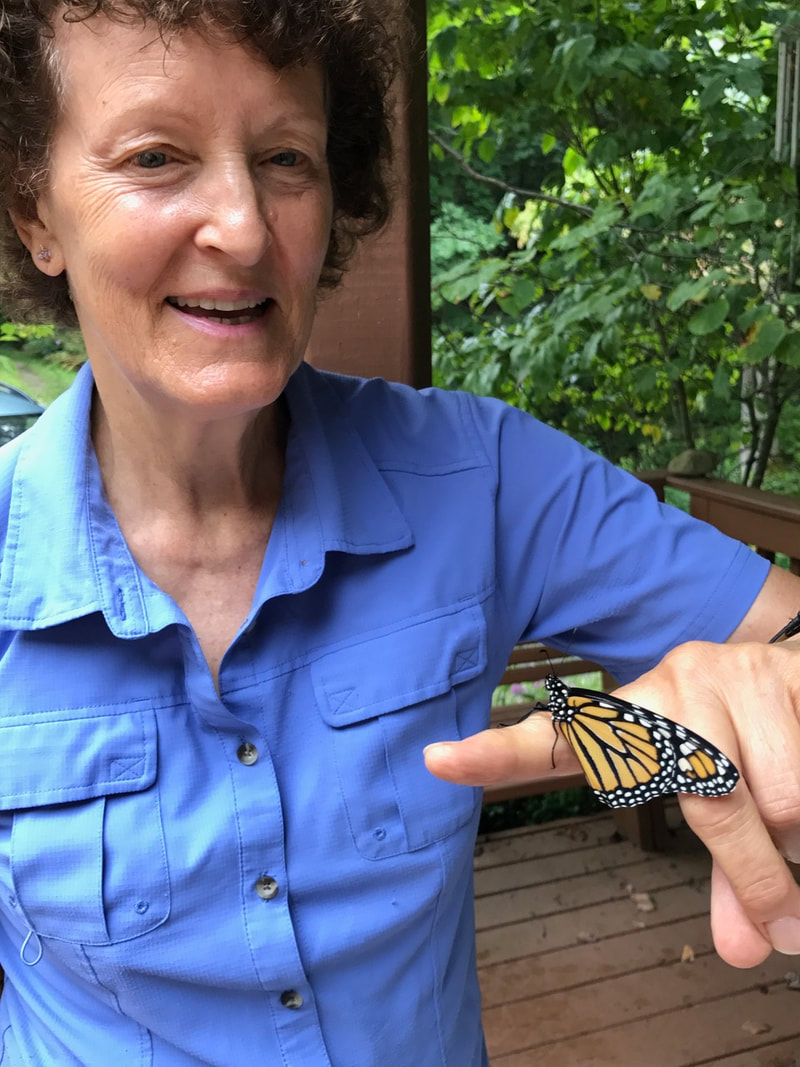
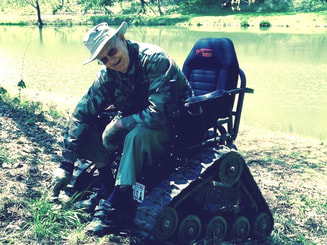
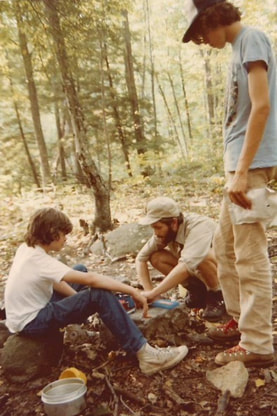
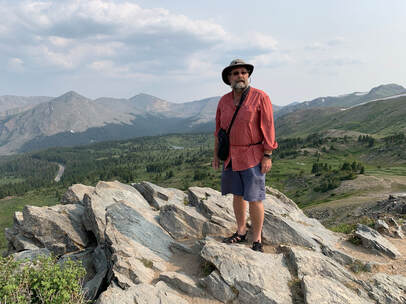

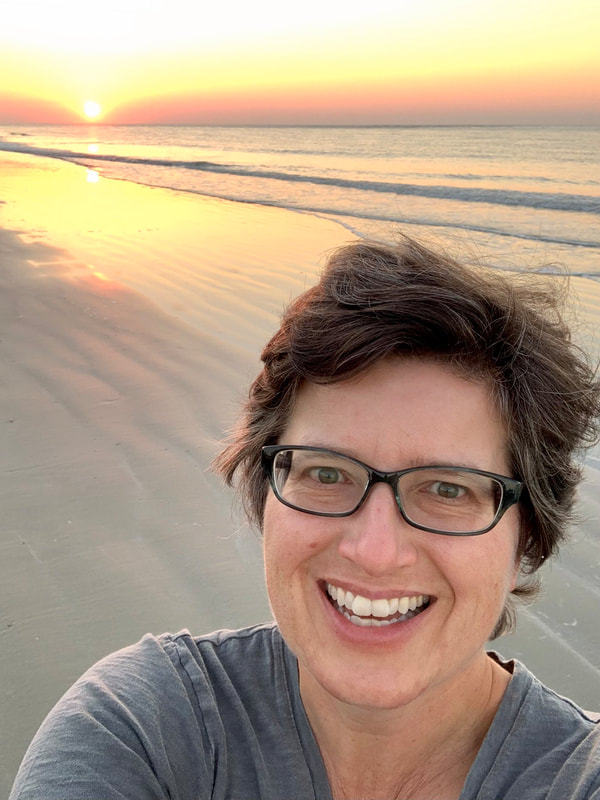
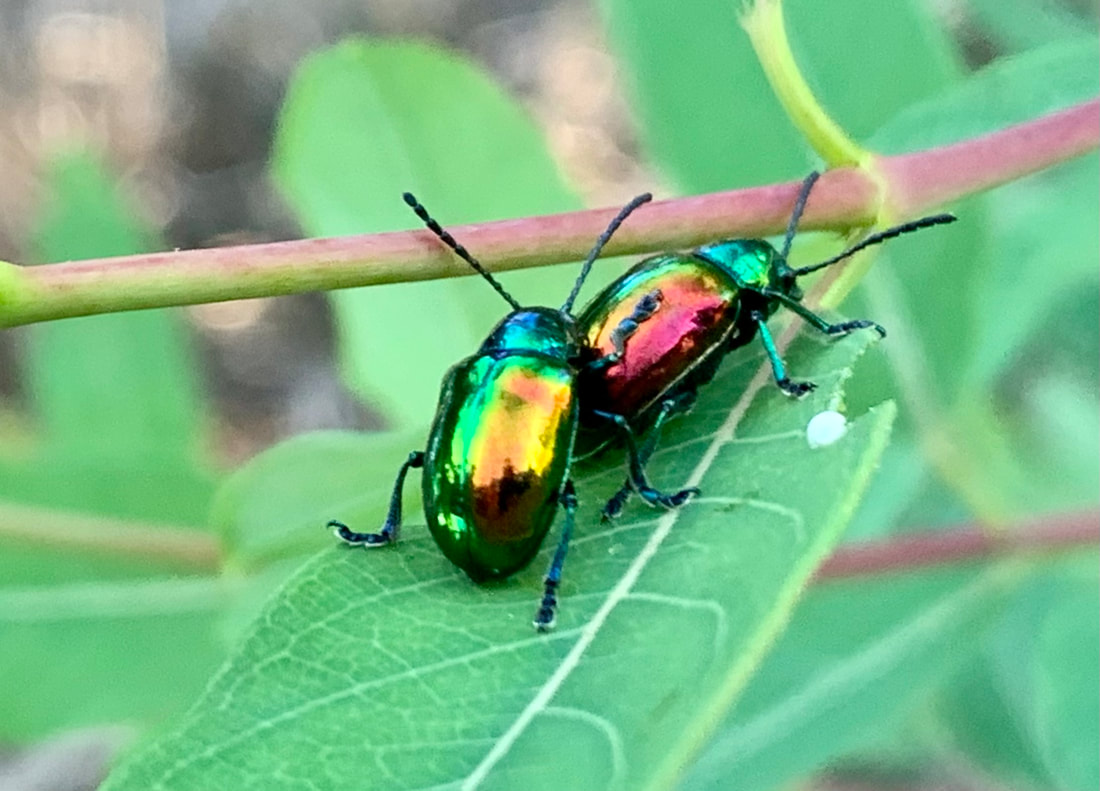
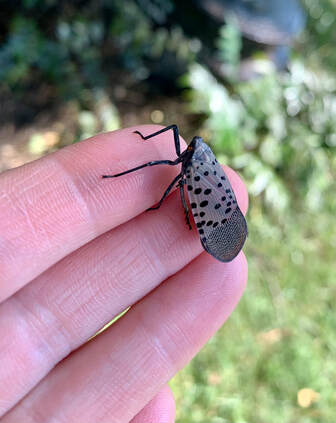
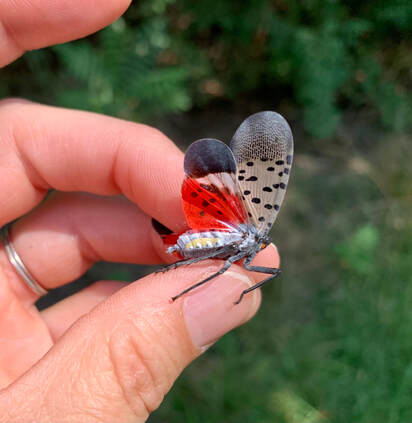
 RSS Feed
RSS Feed